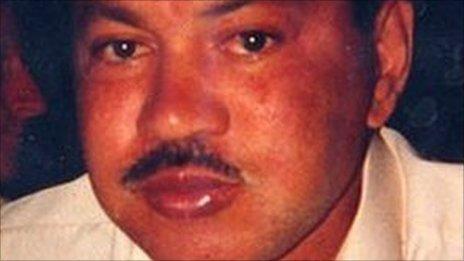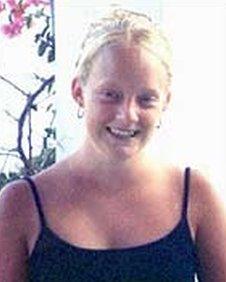Convicting a murderer with no dead body
- Published

Retired bookmaker Don Banfield was murdered for his money
The body of a bookmaker who was murdered by his tax inspector wife and their daughter has never been found. In the past prosecutors have been wary of charging suspects in cases like this - so how difficult is it to convince a jury to convict a killer without the evidence of a body?
Don Banfield, 63, was last seen alive leaving his family home in Harrow, north-west London in May 2001. His body has never been found.
In 2009 police re-opened their investigation and suspicion immediately fell on his wife Shirley, 64, and daughter Lynette, 40.
They found the pair had forged documents with his signature, fraudulently collected his pension and immediately moved house following his disappearance, first to Yorkshire and then to Canterbury in Kent.
They also lied about seeing him in 2008.
But without finding a body, how did police know he had been murdered?
'Tipping point'
Det Ch Insp Howard Groves, who led the Met investigation, said he had "no nagging doubts" that Mr Banfield was dead, but admitted missing body murders were extremely difficult to prove.
He said: "You have to satisfy the jury that someone is dead and therefore not going to walk into a police station and say, 'I believe my wife and daughter have been convicted of my murder, but here I am alive and well'."
He said two particular lines of enquiry form the cornerstone of missing body murder investigations.
Police have to prove an individual was alive in the first instance. Officers then have to prove that normal behaviour by the victim has stopped suddenly and completely.
This would mean no bank transactions, use of a mobile phone, visits to their friends, relatives or their GP.
Mr Groves said: "We established that within days of his last known sighting his pension had been fraudulently transferred from his account to an account that he shared with his wife.
"The tipping point was when handwriting experts confirmed that the documents in question were forged by his daughter."
'The body lives'
In many missing body murder cases, the killer attempts to imitate the victim to falsely prove he or she is alive.
Danielle Jones, 15, vanished while walking to catch a school bus near her home in East Tilbury, Essex, in June 2001. Her body has never been found.

Danielle Jones, 15, was murdered by her uncle Stuart Campbell in 2001
Suspicion immediately fell on her uncle Stuart Campbell who denied her kidnap and murder.
As part of his defence, lawyers presented two text messages sent from Danielle's phone to her uncle after she disappeared.
The first read: "HI STU THANKZ 4 BEIN SO NICE UR THE BEST UNCLE EVER! TELL MUM I'M SO SORRY LUVYA LOADZ DAN XXX"
However, the text messages soon moved from being a central part of Campbell's defence, to being a weapon for the prosecution after linguistics expert Professor Malcolm Coulthard was called.
He pointed out that Danielle had only ever sent messages in lower case.
He also highlighted the misspelling of "what" in the other text. Campbell had spelt it "wot", whereas Danielle's usual spelling before her disappearance was "wat".
Campbell was found guilty of her murder and sentenced to life in prison.
Roy Murphy, a retired Detective Chief Inspector who now lectures in policing and criminal investigations at Canterbury Christ Church University, said this is a common tactic.
"The defendant tries to put up a ruse that the body lives," he said.
"He or she sends messages or makes calls from the victim's mobile phone - in the past this was done by doing things like writing letters."
'Fed to pigs'
Historically prosecutors have been wary of charging suspects if they could not find a body, fearing the victim might turn up alive.
This was a further worry when it was common in the UK for murderers to be executed.

Muriel McKay was mistaken for the wife of Rupert Murdoch
One of the cases which eventually changed this mentality was in 1970 when Muriel McKay, the wife of Rupert Murdoch's deputy, Alick McKay, was kidnapped and killed.
In a bungled extortion attempt Arthur and Nizamodeen Hosein thought they had taken Mr Murdoch's then wife Anna.
Mrs McKay's body was never discovered, but it was suspected she was fed to pigs on a Hertfordshire farm owned by the brothers.
Mr Murphy said: "It was a cause célèbre in terms of missing body murders. It was one of the very first trials that we had when there was no body.
"That made police wake up to the notion that we didn't need to have a body to have a murder."
Mr Murphy said the rarity of these cases is due to the difficulty in disposing of a dead body.
"One of the things that has prevented the perfect murder is just how difficult it is to get rid of the corpse. Most of the time it will turn up."
- Published3 April 2012
- Published14 March 2012
- Published13 March 2012
- Published9 March 2012
- Published8 March 2012
- Published7 July 2011
- Published25 November 2011